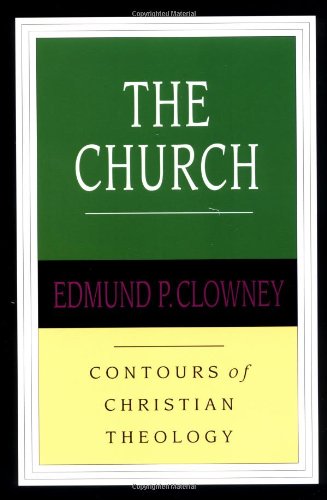A Brief Book Summary from Books At a Glance
by Mark Baker
About the Author
Edmund P. Clowney (1917–2005) was a professor of practical theology and former president of Westminster Theological Seminary in Philadelphia, Pennsylvania (back cover).
About the Series
The Contours of Christian Theology series aims to give a systematic treatment to major doctrines of the Christian faith. “Top priority has been given to contemporary issues, some of which may not be dealt with elsewhere from an evangelical point of view” (7). It also seeks to “rework the orthodox evangelical position in a fresh and compelling way” (7).
Overview
The doctrine of the church is often the place where the rubber meets the road. It is the place where orthodoxy meets orthopraxy. As a result, the doctrine of the church can also be the source of division amongst God’s people. Nevertheless, we must land somewhere. We can’t be so focused on unity that we don’t come to any conclusions. This book begins by offering a biblical theology of the church. It then covers the attributes of the church and the marks and ministry of the church. It concludes with reflections on the church’s relationship with culture and on the structure of the church.
Table of Contents
1 The Colony of Heaven
2 The People of God
3 The Church of Christ
4 The Fellowship of the Spirit
5 The Gift of the Spirit
6 “I Believe … the Holy Catholic Church”
7 Holiness and Catholicity
8 The Marks of the Church
9 The Service of Worship
10 The Nurture of the Church
11 The Mission of the Church
12 The Church in the World’s Cultures
13 The Kingdom, the Church and the State
14 The Structure of Christ’s Church
15 The Ministry of Women in the Church
16 The Gifts of the Spirit in the Church
17 The Gift of Prophecy in the Church
18 The Sacraments
Summary
Chapters 1–5: A Biblical Theology of the Church
What is the Church? Is it universal or local? How does the church relate with the world? Theologians throughout the centuries have wrestled with these key questions. In our day, more liberal-minded theologians have given a unified answer through the statements of the World Council of Churches, and Roman Catholics through Vatican II. We need a better answer than either of these two. To tackle this question, I begin with a biblical theology of the church. “According to the Bible, the church is the people of God, the assembly of the body of Christ, and the fellowship of the Holy Spirit” (28). Within this Trinitarian approach, there is a strong degree of continuity between the Old and New Testaments. The full flowering of the New Testament church comes out of the bud of the Old Testament people of God. In both Old and New Testaments, the people of God are God’s assembly, God’s dwelling, and God’s chosen.
If there really is so much continuity between the testaments, then how do we explain the dramatic changes brought by Jesus? Simply put, the church is a fulfillment of Old Testament prophecy (37). When Christ reveals the power of his church in Matthew 16:18, his promise recalls the stability of the foundation stone of the temple as prophesied in Isaiah 28:15–18 (41). Paul maintains a similar message, claiming that “Christ fulfils the calling of Israel; those united to him are by that fact the new Israel of God” (44; cf. Gal 3:29). Additionally, the Spirit does not lead believers away from Jesus, but to him. The Spirit’s dramatic coming at Pentecost did not inaugurate something brand new but rather renewed the people of God to their original plan (53). The Spirit gives gifts to people in the church not for relaxation and bliss but for the work of the ministry. . . .
[To continue reading this summary, please see below....]The remainder of this article is premium content. Become a member to continue reading.
Already have an account? Sign In
